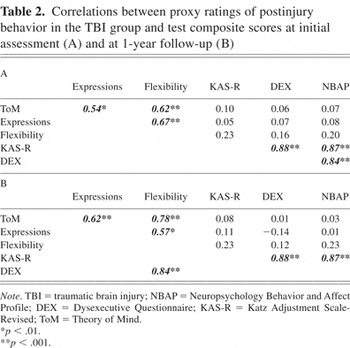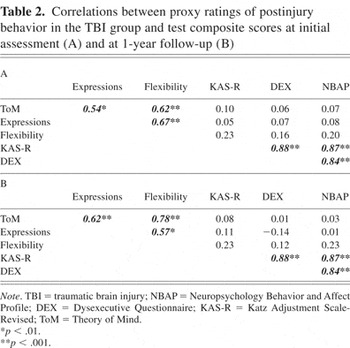The following is a correction for an error that occurred in the Journal of the International Neuropsychological Society, Vol. 14, No. 2, March 2008. In the article titled “Social Behavior Following Traumatic Brain Injury and its Association with Emotion Recognition, Understanding Of Intentions and Cognitive Flexibility,” pp. 318–326, by Maarten Milders et al., on page 323 there is a misprint in Table 2B. The correlation in row “DEX” and column “Flexibility” stated as “0.84**” belongs in the column “NBAP” as shown below.
Incorrect Table 2

Corrected Table 2

Cambridge University Press and the Editor regret the inconvenience that these errors may have caused.


